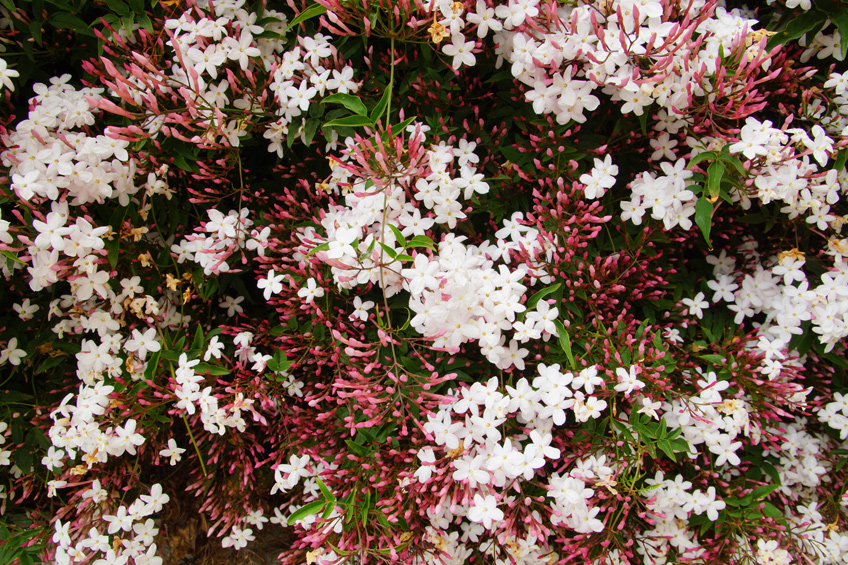
When it's on, it's on! The common jasmine, Jasminum polyanthum. Photo - Haris M / Shutterstock.com
Fact file
Name: Jasminum species
Belongs: Oleaceae family
Origins: Africa, Europe and Asia
Flowering: Spring
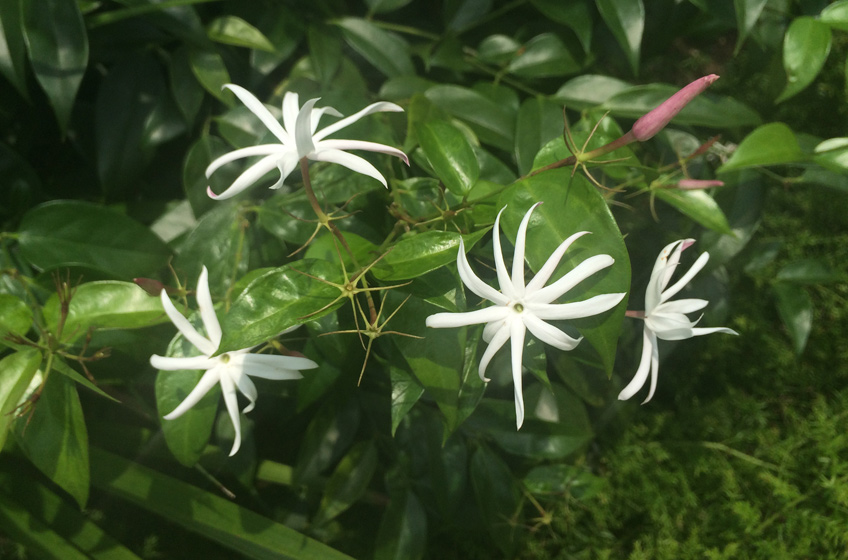
The tropical climate loving Angel wing jasmine, Jasminum nitidum. Photo - Linda Ross
This genus includes approximately 200 species of dark green foliaged evergreen twining climbers, and deciduous and semi-deciduous shrubs. The family is
known for the marvellous scent of its mostly white, pink-tipped or yellow flowers, though not all are equally endowed with perfume. They flower best
in full sun, will tolerate part-shade, and don’t like severe frosts.
Now: To smell them is to love them! Enjoy the moment, but also plan for the future by taking firm tip cuttings for propagation, and fertilising
with a slow-release plant food.
Summer: Spot flowering is likely.
Autumn: Prune old growth away and train new growth onto its support.
Winter: Protect against heavy frosts.
We love it: covering fences and lattice in cottage gardens. It looks right at home in pink and white gardens, with sprays of Gaura ‘Siskiyou Pink’, punctuated by the bun-shaped Raphiolepis ‘Oriental Pearl’ and clipped Gardenia ‘Florida’. Yellow jasmine (J. mesnyi or J. humile)
makes a pretty addition to a blue and yellow garden, with Duranta ‘Sheena’s Gold’, Sisyrinchium angustifolium ‘Devon Skies’ and blue
felicia daisy.
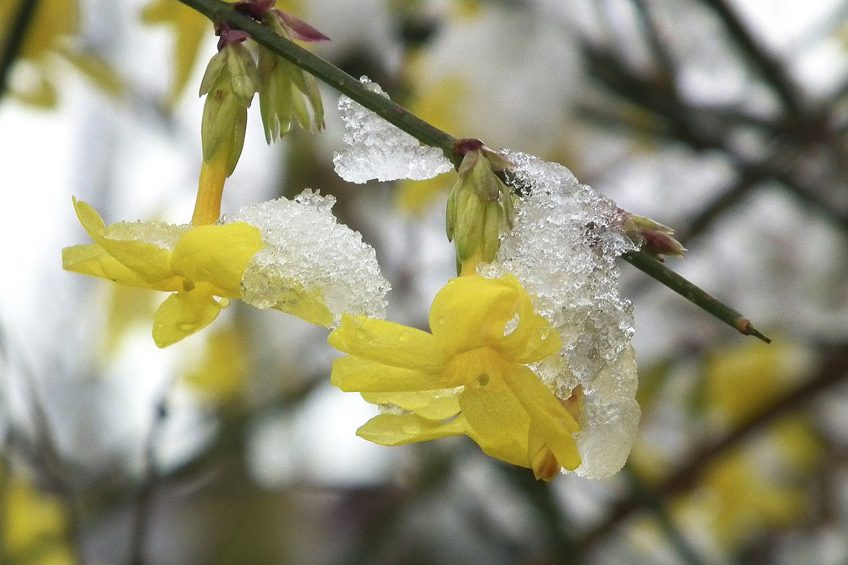
Getting a little frost-exposed, the Yellow Jasmine.
What else: If planted in fertile, moist soil jasmine needs just one application of slow-release fertiliser in spring. Regular pruning
is required to prevent tufts of growth and flowers on the ends of branches with woody stems below.
Some favourites:
Common jasmine, J. polyanthum, is a much-loved vine with a rampant habit that can become weedy. The fragrance is strong, too strong for some.
Some gardeners prefer to keep this one contained.
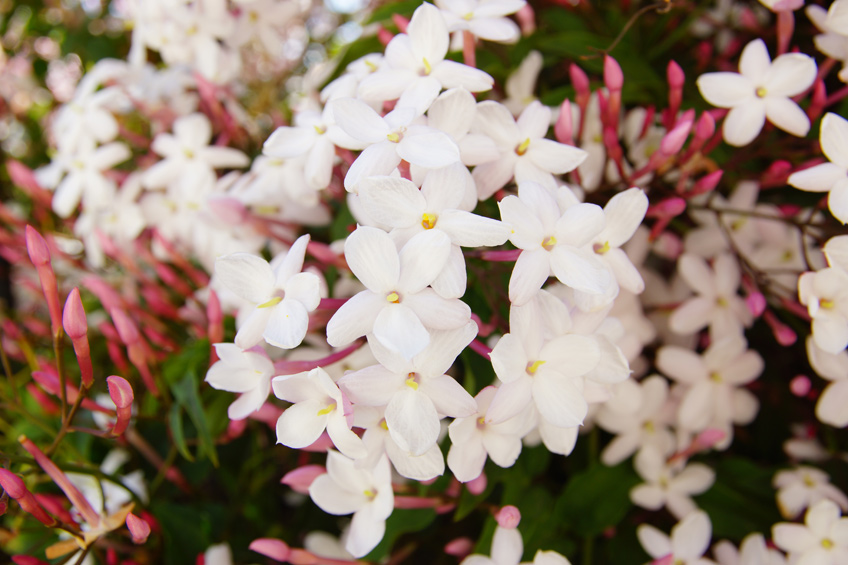
Common, but no less loved, Jasminum polyanthum. Photo - Haris M / Shutterstock.com
Poet’s jasmine, J. officinale ‘Grandiflorum’, is better behaved, with perfumed white flowers in summer.
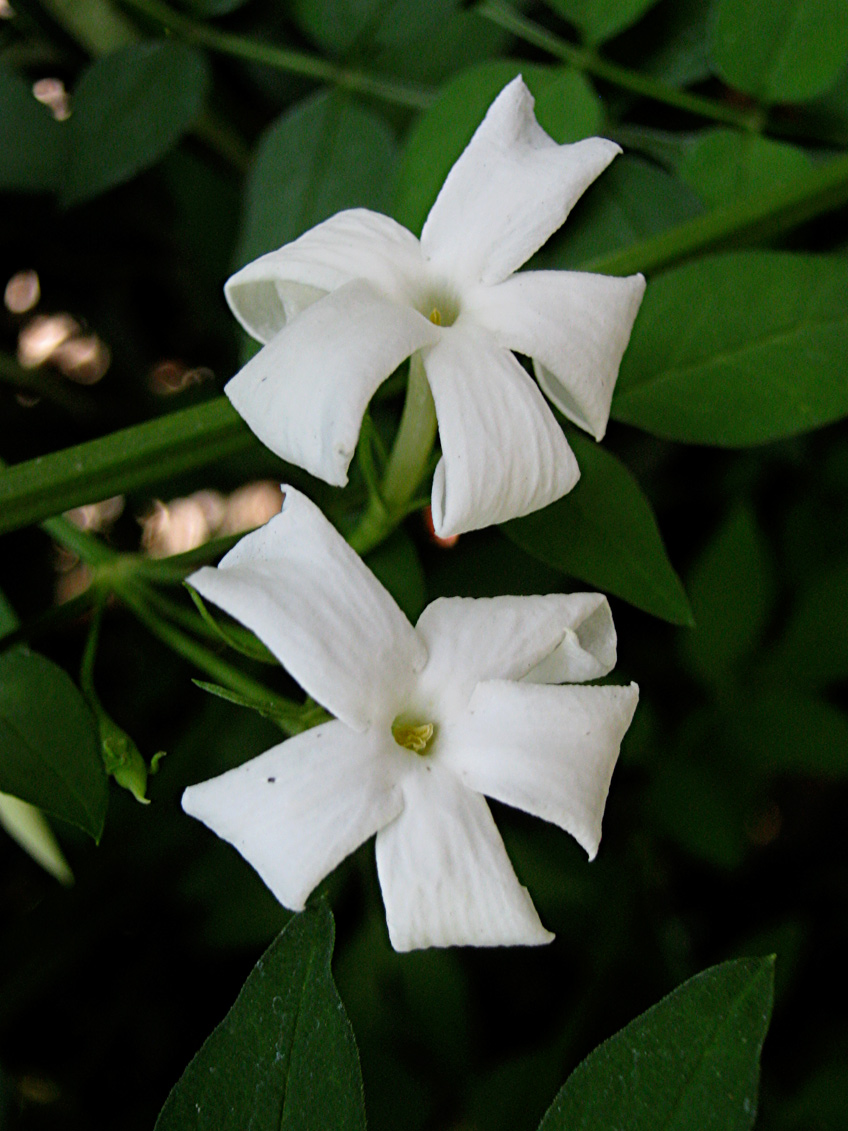
Poets jasmine, Jasminum officinale 'Grandiflorum'.
Primrose jasmine, J. mesnyi, is a winter-flowering scrambly shrub or slender-limbed climber.
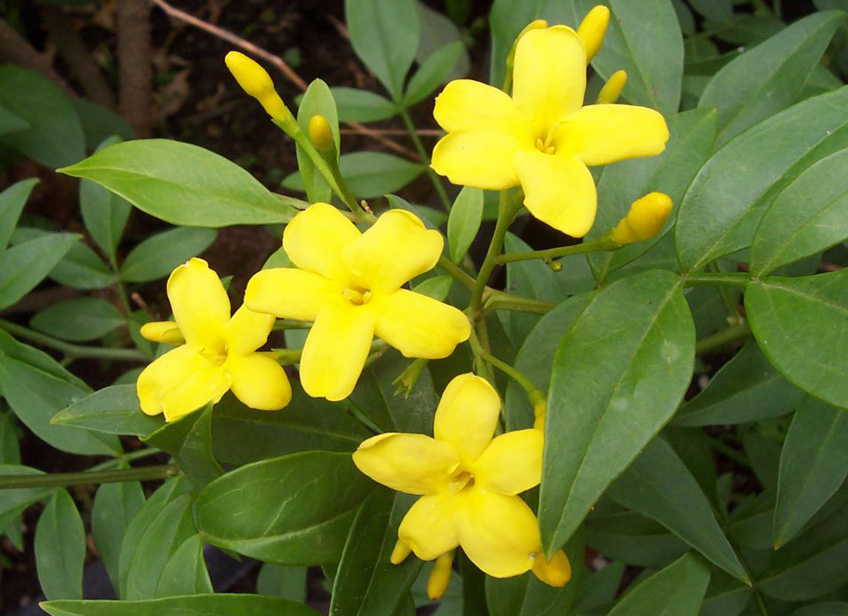
Primrose jasmine, Jasminum mesnyi, has all but vanished from Australian gardens
Biblical jasmine, J. sambac, has larger leaves than common jasmine and clusters of waxy, fragrant white flowers that age to pink. There’s a double
form, ‘Duke of Tuscany’, which reminds us of a notched embroidery rose.
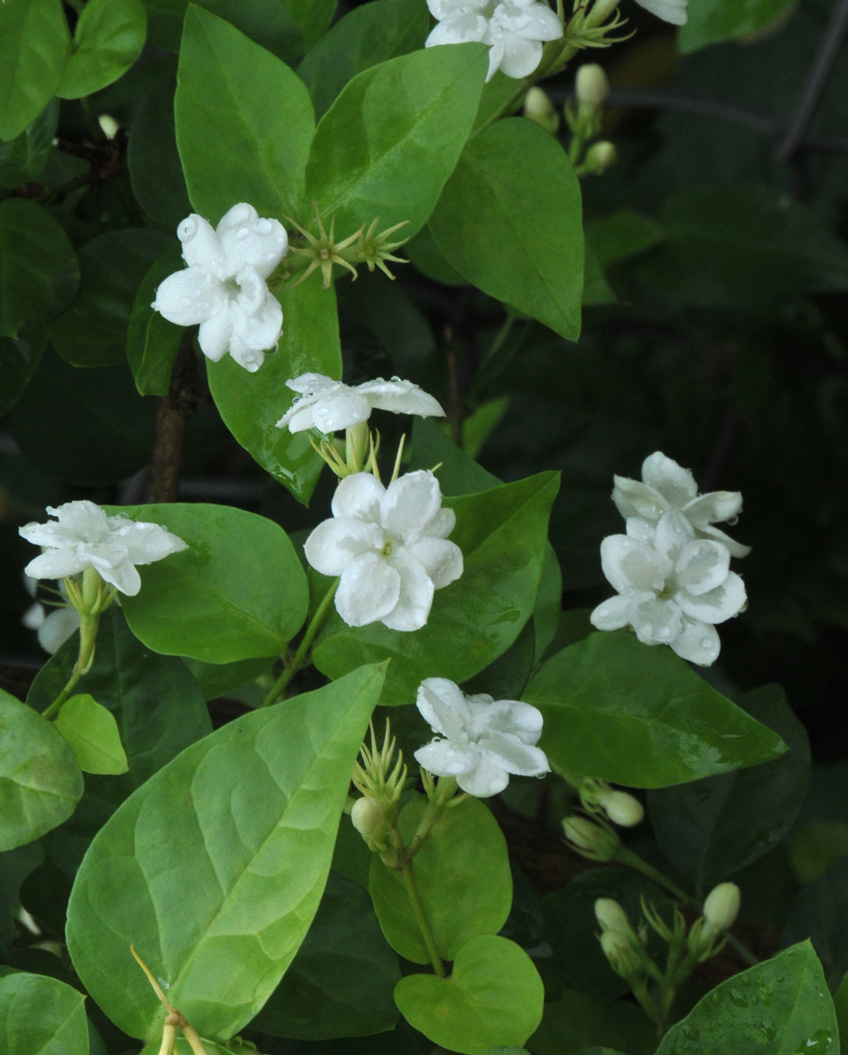
Biblical or rose jasmine is a twining vine with a delectable fragrance.
Sweet jasmine, J. suavissimum, is an Australian native jasmine that flowers late winter to summer.
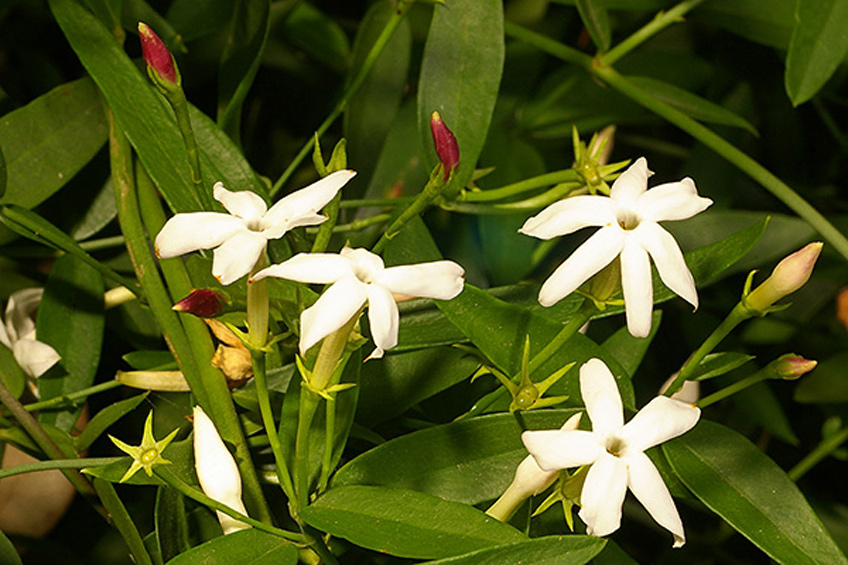
Our native jasmine, Jasminum suavissimum, is beautiful, fragrant and dry-tolerant. Gorgeous!, Photo - Australian Native Plant Society (Australia)
Azores jasmine, J. azoricum, has glossy green leaves with white star-shaped flowers.
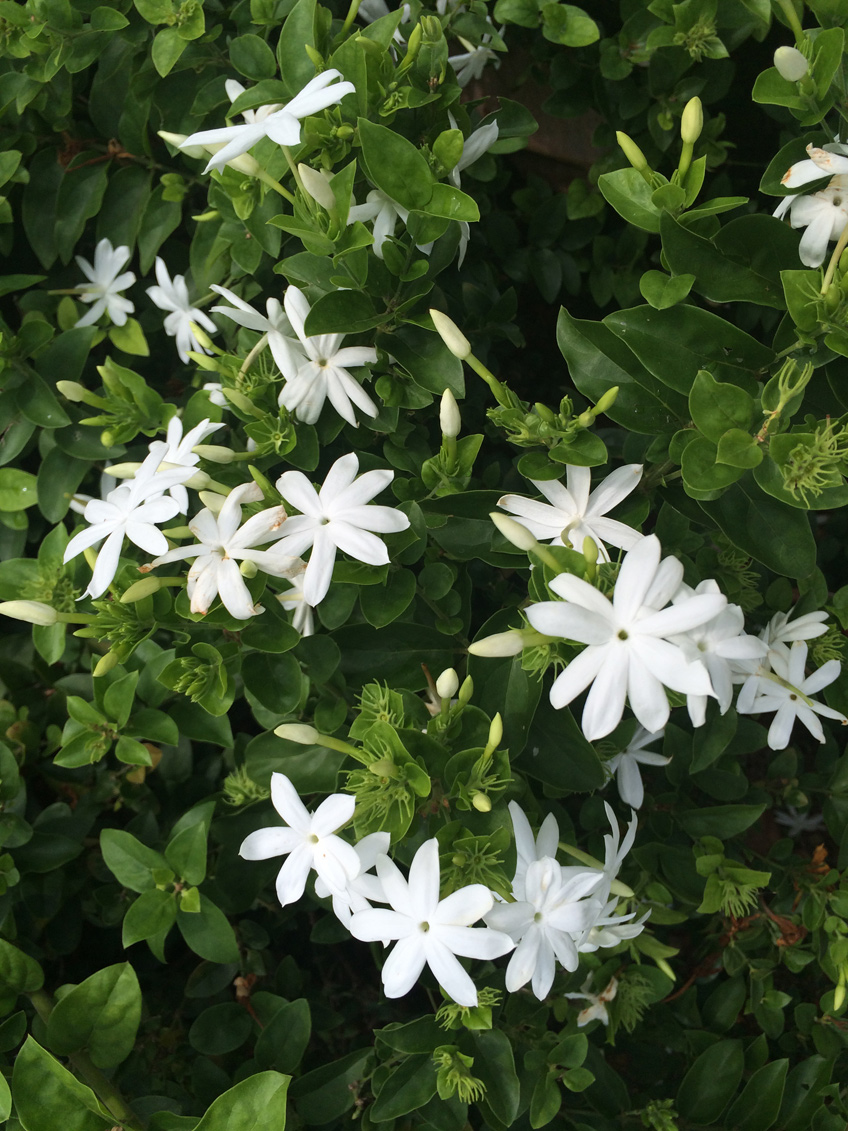
Azores jasmine, Jasminum azoricum.